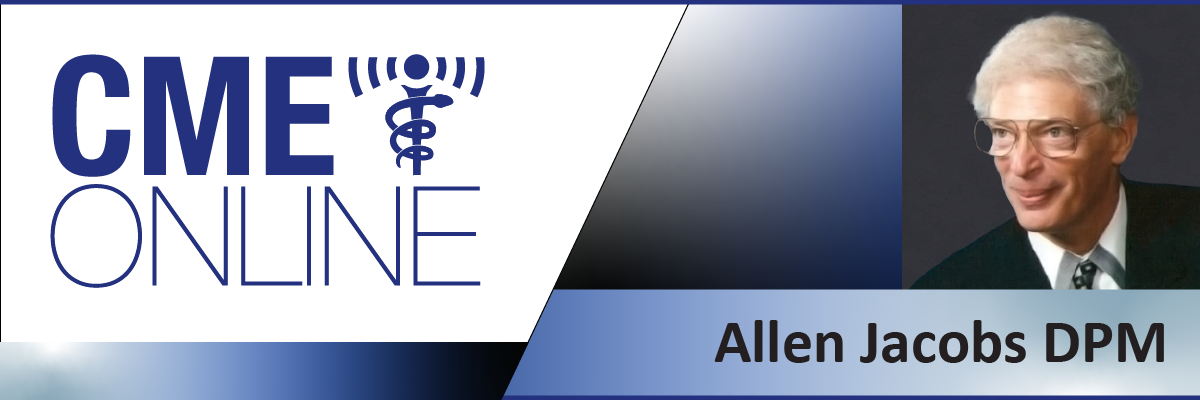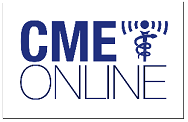2022 Saint Louis Meeting - Jacobs - Fluroquinolone Antibiotics
CME_Online

The 34th Annual St. Louis Podiatry Seminar was recorded live at the Swan and Dolphin Hotel February 17, 18, and 19, 2022 The lectures included:
- Metabolic Disorders in Podiatric Practice
- Metabolic Considerations in Delayed Union and Non-Union: More Common Than You May Think
- Bone and Joint Disorders in the Diabetic Patient: More than Charcot’s Joint Disease
- Evaluation and Treatment of Gout in 2022
- Commonly Used Medications Which Impair Bone Healing: YIKES! I Did Not Know That…
- Sarcopenia in the Podiatry Patient
- Management of Hallux Limitus
- Clinically Relevant Etiologic and Biomechanical Considerations and the Impact on Operative and Non-Operative Care
- Cheilectomy as a “Stand Alone” Procedure: Does it Relieve Pain and Restore ROM?
- Manipulation and Injection Under Anesthesia
- Distal Osteotomy for Hallux Limitus: Options and Outcomes
- Phalangeal Osteotomy for Hallux Limitus: A Helpful Adjunct?
- Proximal Osteotomy or Arthrodesis for Hallux Limitus
- Interpositional Arthroplasty: Is There Really a Benefit?
- The Role of Implant Arthroplasty in Hallux Limitus
- The Keller Bunionectomy: Whither and Why Not?
- Pharmacologic Considerations in the Daily Podiatry Practice (Virtual and On-Demand)
- Indications For and Use of Marijuana and Marijuana Derived Products in the Podiatric Practice
- Treatment of Pain with the Use of Topical Medications
- Quinolone Antibiotics and Quinolone Associated Complications
- Incorporating the Treatment of Diabetic Neuropathy into Your Practice
- Oldies But Goodies: Prescribing Medications in Older Patients
- Selected Topics in the Evaluation and Treatment of Common Infections
- IDSA Guidelines for the Management of Soft Tissue Infections
- IDSA Guidelines for the Treatment of MRSA Infections of Bone and Soft Tissue
- Imaging for Soft Tissue and Bone Infection: A Review of the ARA Guidelines
- Prevention Strategies for Surgical Site Sepsis: Myth vs. Reality
- Treating Osteomyelitis with Oral Antibiotics
- Dermatologic Disorders in Podiatry
- Dealing with the Realities of Onychomycosis: When are Laboratory Studies Indicated?
- Why Does Treatment Fail? Treatment not Trimming
- Interdigital Web-Space Infection
- Cutaneous Malignancy: Increasing the Role of Biopsy
- Update on the Treatment of Plantar Verruca
- The Cares Act
- Update on Current OSHA Regulations Affecting Your Practice
- Blood Borne Pathogens: Let’s Wipe the Slate Clean
- Malpractice and Imaging
- How to be a More Effective Mentor to Students and Residents
- Selected Topics in Foot Surgery
- Lapidus Lunacy
- Is Distal Metaphyseal Osteotomy Dead or Alive?
- Calcaneal Osteotomy for Retro-Calcaneal Pain
- Perioperative Management of the Anti-Coagulated Patient
- Juvenile Bunion Surgery: Current Thoughts and Indications
- Complex Regional Pain Syndrome
- DVT and Pulmonary Embolism
- Malpractice and Bunion Surgery
- The Diabetic Foot and Treatment of Infections
- The “NO OPTION” Podiatry Patient: What to Do When There is No Help
- What’s New in Interventional Cardiology
- Developing Your Services Beyond Shoes and Toenails: Proper Use of 24, 25 Modifier
- The Expanding Role of Laboratory Studies in Ulcer Care
- Changes to HIPPA
- Understanding The “NO SURPRISE ACT”
Part 1 - Course Staff
Objectives of this program include educating the participant on the following key topics:
- Medical and Surgical Management of the Podiatric Patient
- Understanding what risks exist to your patient as a part of the care they receive
- Understand your responsibilities in protecting your patient
- Understand the role of imaging in diagnosing and treating lower extremity pathology
Fees
No charge for seminar registrants
Intended Audience: Podiatrists
Refund Policy
No refunds are available for online courses
licy. The course must be completed prior to, but no later than 30 days following the date of renewal.
In accordance with the Council on Podiatric Medical Education's Standards and Requirements for Approval of Providers of Continuing Education in Podiatric Medicine, any relevant financial relationships with commercial interests of faculty, planning committee, or any others who have influence over the content of this educational activity must be disclosed to program participants.
Commercial Interests: No commercial interest provided financial support for this continuing education activity.
CME Online is approved by the Council on Podiatric Medical Education as a provider of continuing education in podiatric medicine. CME Online has approved this activity for a maximum of 0.5 continuing education contact hour.
